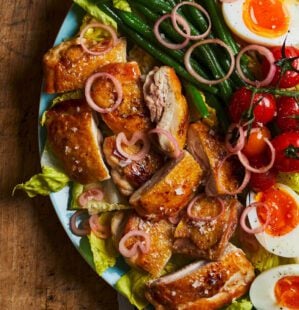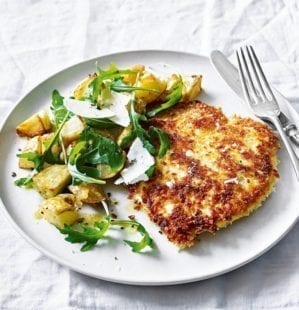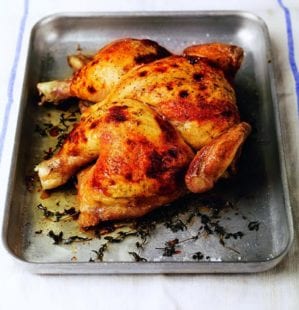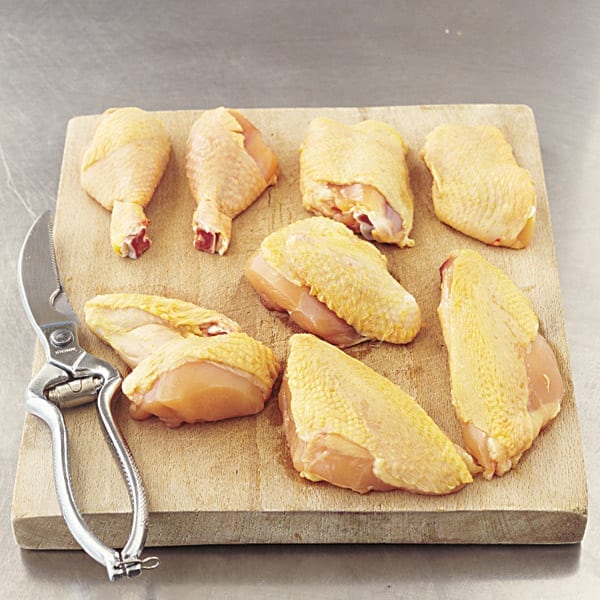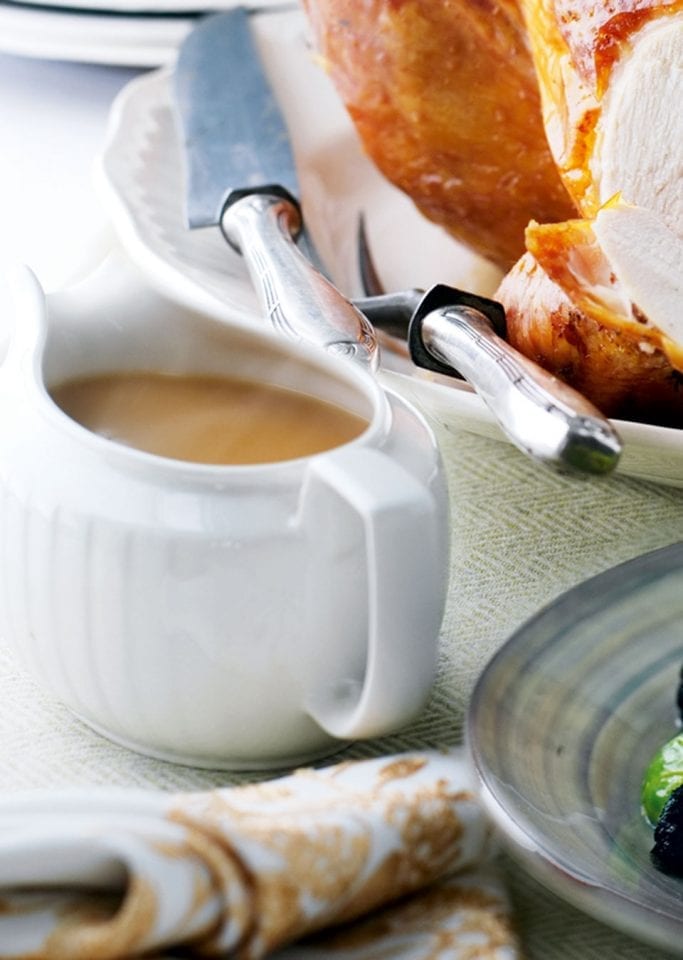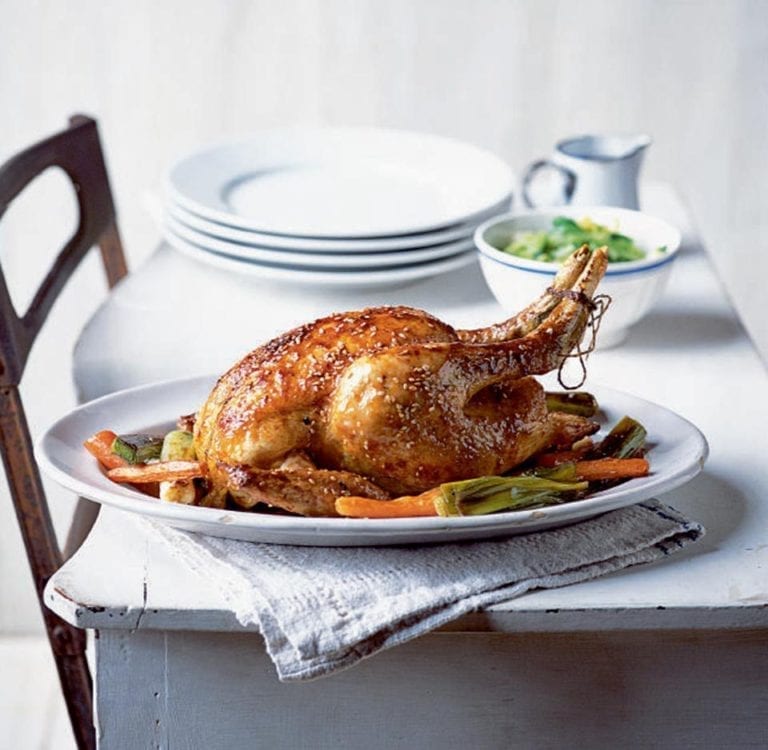How to make the best chicken of your life
Of all the meat we eat in the UK, chicken makes up over half – so knowing how to prepare it properly is a skill every home cook should have. Our food team share their failsafe techniques, tips and tricks for a whole chicken, chicken thighs and chicken breasts, with simple recipes that – we promise – will be the best you’ve ever tasted
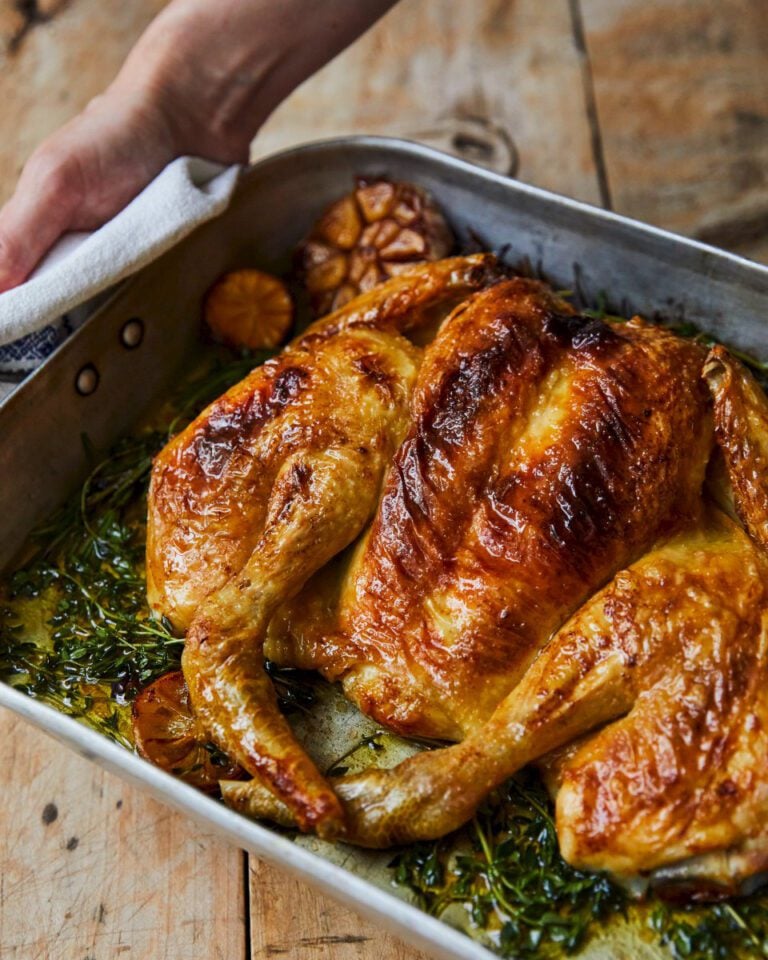
First, get the basics right
Buy better chicken
It’s the most important part of your dish, so get the best you can. The difference between one that’s been intensively farmed and one that’s free-range and corn-fed is like night and day. We love (and used) Sutton Hoo chickens for these recipes, but there are many good suppliers out there producing incredible chicken with so much flavour.
If you’re frying, don’t go for a non-stick pan
Stainless steel or cast-iron will give you the even and intense heat you need for a proper sear (especially if you want golden crispy skin). The meat will naturally release from the pan when it’s ready to be flipped – we promise! (see our pan feature here).
Rest the chicken after it’s cooked
Even if it’s a small breast or thigh, a few minutes will help. Whipping it out of the pan and cutting into it right away means it’ll quickly dry out on the plate. A whole roast chicken should rest for at least 20 minutes.
If you have a thermometer, use it
Taking out the guesswork will ensure perfectly cooked chicken every time. Chicken needs to be 74°C at its thickest part to be cooked through, but keep in mind that it will creep up by a few degrees during the resting stage, as the residual heat continues to cook it. Take it out of the pan when it’s at about 70°C, wait 5 minutes, then check it again.
Your chicken breasts expert, Emily Gussin

“They’re are popular for a reason – breasts are quick to cook, lean and tender, and their uniformity makes them great for all manner of cooking techniques. They can dry out easily, however – especially when cooked without the skin (which is usually how they come these days). With just a few easy tricks, though, you can turn this simple cut of meat into something juicy and spectacular.”
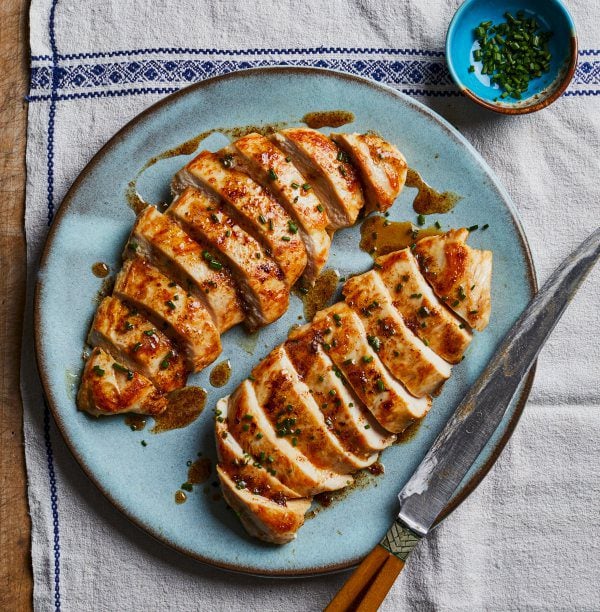
Bash it!
The main problem with chicken breast is its shape. Ensuring it’s cooked all the way through at the thicker point without drying out the thinner end is basically impossible. The answer? Put it in a bag or between 2 sheets of baking paper and give it a bash. You don’t have to make it really thin (like you would for an escalope or schnitzel) – just bash the thickest part until the breast is an even thickness throughout.
Salt it
Massage some salt into the chicken breast, wait 30 minutes, then brush it off. This is the key to juicy chicken breasts and is well worth the half-hour pre-planning. It’s known as dry-brining: the salt draws out moisture from the meat, then dissolves into the liquid before being drawn back into the meat. Without getting into too much science, this salty water stops the muscle fibres from contracting as much when heated, so the meat retains more liquid rather than pushing it out. This not only helps keep the meat juicy but it also seasons the chicken throughout and helps with browning (as less liquid is released into the pan). You can also add spices with the salt for extra flavour.
Now cook Emily’s perfect pan-fried chicken breasts
Your chicken thighs guru, Pollyanna Coupland

“Thighs are the most flavourful cut of the chicken, thanks to two things: fat and hard-working muscles! While breasts are lean and uniform, thighs are a tasty combination of muscle, fat and collagen that’s found closer to the bone – which is where the meat seems to taste best. I do, however, find eating bone-in chicken annoying at times. Without getting your hands involved it can be tricky to get at every bit of meat – and they take a while to cook. Luckily, there’s a simple solution…”
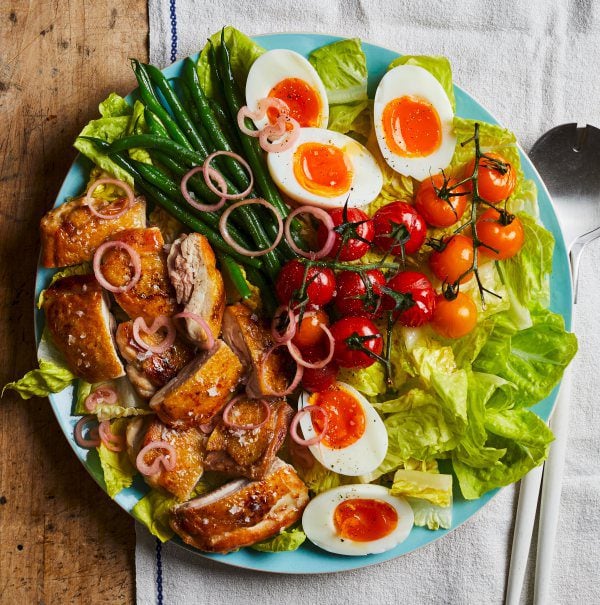
Debone it
A deboned yet skin-on chicken thigh is a rare find these days – you’re more often left to choose between thighs with the bone-in and skin still attached, or skinless boneless thighs. A kind butcher will debone thighs for you, but it’s easy to do at home (and you get more meat – and the skin! – for your money compared to thigh fillets). It also means you have plenty of bones to stash away in the freezer for making stock. You simply cut along each side of the bone, then tuck your knife under it for a final slice and, like magic, you have a skin-on deboned chicken thigh.”
Press it
Boneless chicken cooks quickly, but we all know the best thing about chicken is golden, super-crisp skin. The key when cooking thighs is to put something heavy on top of them while they cook skin-side down – this ensures a good even contact with the hot pan, turning the skin crisp and cooking the meat through evenly. Don’t worry about the pressure squeezing any juices out; thighs have enough fat and collagen in them to stay nice and moist, and the speedy cooking time gets the meat cooked before it has a chance to dry out.
Now cook Pollyanna’s pressed chicken thigh niçoise
Your roast chicken master, Tom Shingler

“Traditional British cuisine continues to be looked down upon in some small (and clearly misled) parts of the world. But no one can roast a chicken quite like we can. Bring it to the table with all the classic Sunday roast trimmings and you have what many would pick as their desert island meal. And while no one’s going to turn their nose up at a chicken roasted with nothing more than a sprinkle of salt and a drizzle of oil, there are a few techniques that take it to the next level.”
Spatchcock it
The trouble with chicken – as with the breasts – is that it’s uneven. Roasting a whole bird enough so the denser thighs, tucked in close to the body, are cooked through without overdoing the leaner breasts on top is almost impossible. Spatchcocking (cutting out the backbone and pressing down on the bird so it splays out into a wider, flatter shape) is the answer. Doing this (or getting your butcher to do it for you, although it does only take a few minutes) has several benefits:
- There’s more exposed skin, meaning more crispy bits
- It’ll cook much more quickly at a higher heat (up to half an hour quicker)
- The thighs and breasts get cooked to perfection at the same time
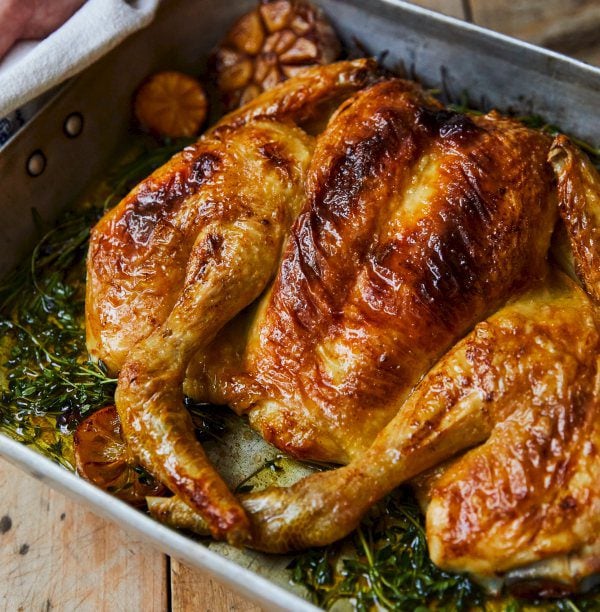
Rub it
Once your chicken’s nice and flat, it’s time to get a bit scientific. A perfect roast chicken has both juicy meat and crispy skin. I employ the same dry-brining technique as Emily does for chicken breasts, but I add a bit of baking powder in there too and leave it overnight to really work its magic. The baking powder begins to break down the proteins in the chicken skin, helping it to brown and crisp once exposed to heat, while the salt works its way into the meat to keep it juicy. It’s a killer combo.
Butter it
The final step is to introduce a little extra fat so the chicken essentially self-bastes while it cooks. Basting using the juices from the bottom of the tray is great, but it can interfere with crisping up that skin. Opening the oven door tends to drop the temperature by at least 25°C, and if there’s any moisture in those basting juices, you’re softening the skin with every spoonful. By pushing a little butter in the gap between the skin and the meat, you’re creating a pocket of trapped basting fat that will benefit both as they cook.
Subscribe to our magazine
Food stories, skills and tested recipes, straight to your door... Enjoy 5 issues for just £5 with our special introductory offer.
Subscribe
Unleash your inner chef
Looking for inspiration? Receive the latest recipes with our newsletter
